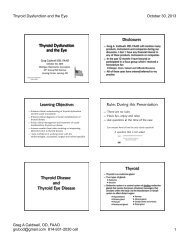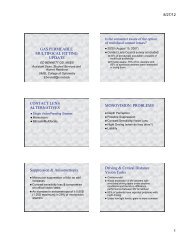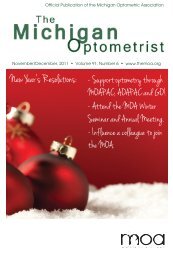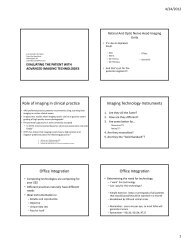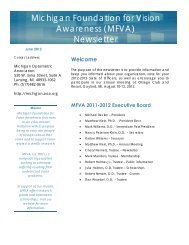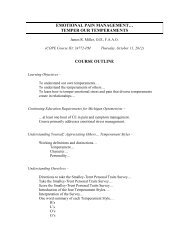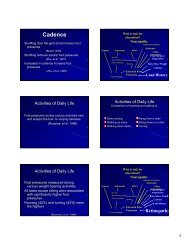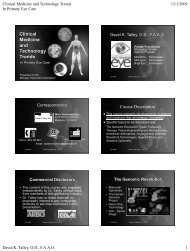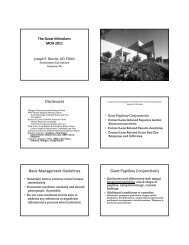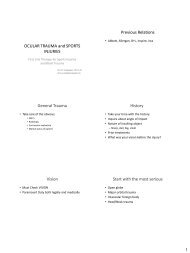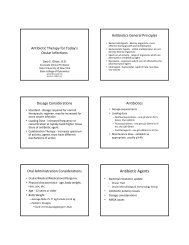Nutraceuticals, Supplements & Vitamins - Michigan Optometric ...
Nutraceuticals, Supplements & Vitamins - Michigan Optometric ...
Nutraceuticals, Supplements & Vitamins - Michigan Optometric ...
You also want an ePaper? Increase the reach of your titles
YUMPU automatically turns print PDFs into web optimized ePapers that Google loves.
Omega 3 Fatty Acids<br />
• Sjogren's patients tend to have lower dietary levels<br />
of omega-3 fatty acids, including EPA & DHA than<br />
matched controls<br />
• Optimum ratio of omega-3 to omega-6 ratio for good<br />
health typically is 1:4<br />
• Severity of dry eye in Sjogren's syndrome is inversely<br />
proportional to membrane and serum levels of DHA<br />
• Omega 3 fatty acids affect the lipid profiles of<br />
meibomian gland secretions in Sjogren’s patients<br />
Dry Eye Syndrome<br />
Gamma-linoleic acid (GLA) may be beneficial in<br />
Sjogren’s syndrome<br />
Diets with proper levels of <strong>Vitamins</strong> A, B6, C;<br />
potassium; zinc also important for normal tear film<br />
function<br />
Potassium – improves tear film osmolarity (TheraTears<br />
artificial tear formulation)<br />
Albumin – ocular surface disorders with tear deficiency<br />
Omega 3 Fatty Acids<br />
• Omega-3 fatty acids help suppress meibomianitis,<br />
decrease apoptosis, improve neural signal<br />
transduction, stimulate tear production, augment<br />
the tear film oily layer and have anti-inflammatory<br />
properties<br />
• Increased essential fatty acids, particularly omega 3<br />
stimulates tear production and rebalances tear film<br />
physiology<br />
• May also benefit acne rosacea patients with<br />
associated dry eye syndrome<br />
Contact Lens Related Infections<br />
• Contact lens biofilms may be associated with low<br />
levels of tear lactoferrin<br />
• Hydroxyl radicals, a by-product of oxidative stress<br />
superoxide and H2O2 catalyzed by free iron, may<br />
exacerbate damage to cornea<br />
• Adequate levels of iron-binding tear lactoferrin is<br />
suggested to lower corneal opportunistic risks for<br />
related infections.<br />
• Site-specific lactoferrin proteins are also<br />
produced and immediately released by neutrophils,<br />
the first white blood cells to appear in infection<br />
11



